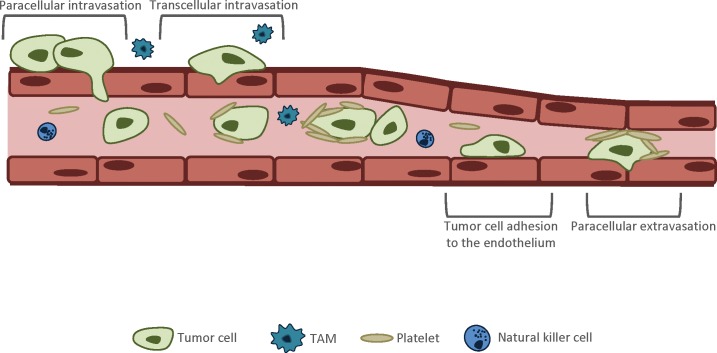Figure 2.
Crossing the endothelial barrier. There are two routes used by tumor cells to cross the endothelial cell barrier: paracellular and transcellular TEM. Paracellular TEM involves disruption of endothelial cell junctions between neighboring endothelial cells, which allows tumor cells to squeeze between them. Tumor cells induce endothelial cell junction opening by secreting a variety of factors, for example, TGF-β and VEGF. Additionally, the opening of endothelial junctions can be promoted by tumor-associated macrophages (TAMs). Transcellular TEM refers to the migration of tumor cells through the endothelial cell body, and this route of TEM seems to be used by tumor cells less often than the paracellular migratory mechanism. As tumor cells enter into the bloodstream, they encounter various challenges that dramatically decrease their chances to survive and arrive to the distant site. Aggregation with platelets provides tumor cells protection from immune cells, reduces shear stress and facilitates tumor cell adhesion and extravasation to the secondary site. Extravasation involves the specific interaction of tumor cells with vascular endothelium via cell adhesion-and chemokine-related processes. Similarly to the process of intravasation, extravasating tumor cells can cross the endothelial barrier via a para-or transcellular mechanism.

